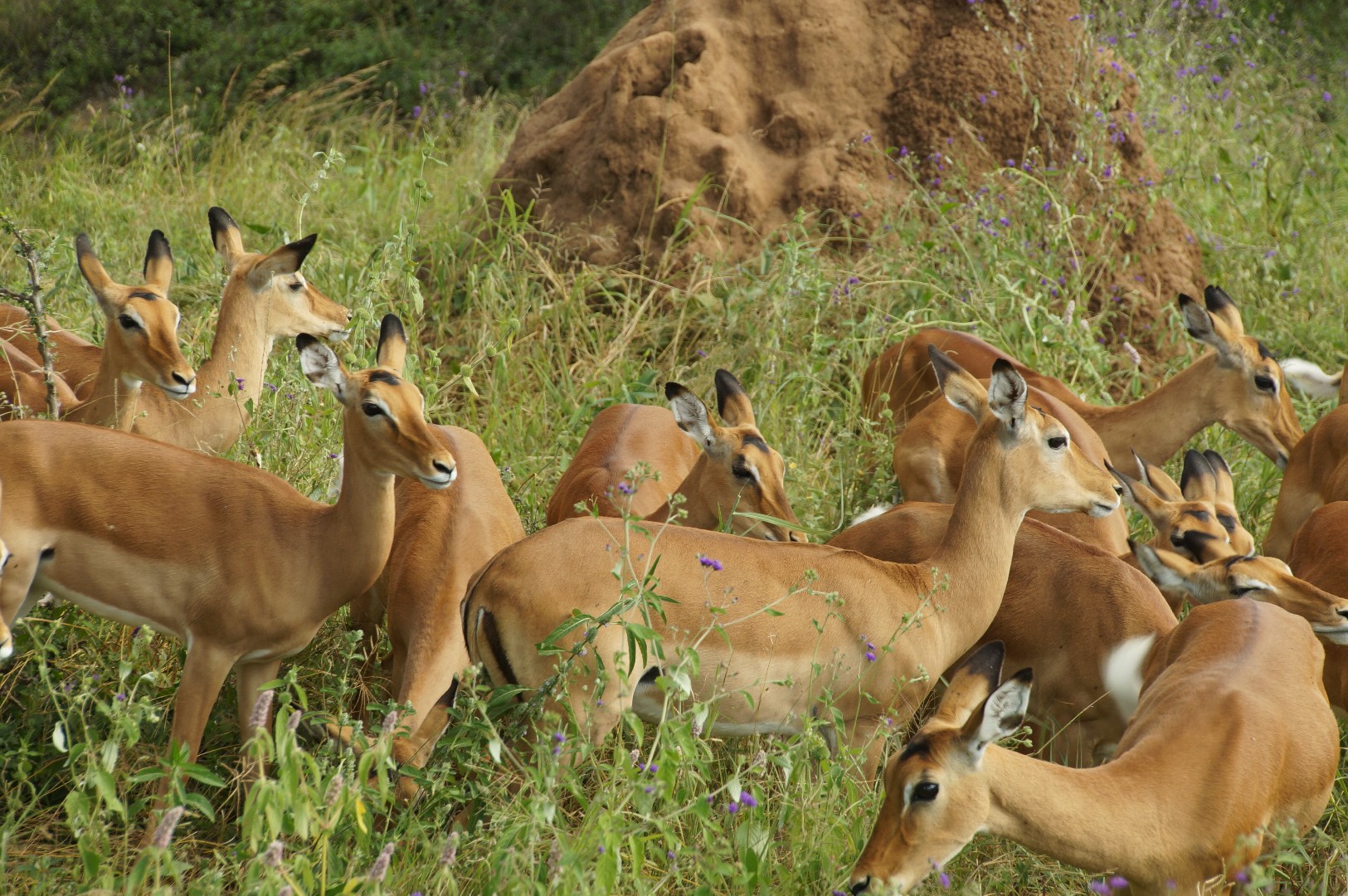Impala
A species of Impala, Also known as Black-faced impala Scientific name : Aepyceros melampus Genus : Impala
Impala, A species of Impala
Also known as:
Black-faced impala
Scientific name: Aepyceros melampus
Genus: Impala
Content
Description General Info
Description
The impala is a medium-sized, slender antelope similar to the kob or Grant's gazelle in build. The head-and-body length is around 130 centimetres (51 in). Males reach approximately 75–92 centimetres (30–36 in) at the shoulder, while females are 70–85 centimetres (28–33 in) tall. Males typically weigh 53–76 kilograms (117–168 lb) and females 40–53 kilograms (88–117 lb). Sexually dimorphic, females are hornless and smaller than males. Males grow slender, lyre-shaped horns 45–92 centimetres (18–36 in) long. The horns, strongly ridged and divergent, are circular in section and hollow at the base. Their arch-like structure allows interlocking of horns, which helps a male throw off his opponent during fights; horns also protect the skull from damage. The glossy coat of the impala shows two-tone colouration – the reddish brown back and the tan flanks; these are in sharp contrast to the white underbelly. Facial features include white rings around the eyes and a light chin and snout. The ears, 17 centimetres (6.7 in) long, are tipped with black. Black streaks run from the buttocks to the upper hindlegs. The bushy white tail, 30 centimetres (12 in) long, features a solid black stripe along the midline. The impala's colouration bears a strong resemblance to the gerenuk, which has shorter horns and lacks the black thigh stripes of the impala. The impala has scent glands covered by a black tuft of hair on the hindlegs. Sebaceous glands concentrated on the forehead and dispersed on the torso of dominant males are most active during the mating season, while those of females are only partially developed and do not undergo seasonal changes. There are four nipples. Of the subspecies, the black-faced impala is significantly larger and darker than the common impala; melanism is responsible for the black colouration. Distinctive of the black-faced impala is a dark stripe, on either side of the nose, that runs upward to the eyes and thins as it reaches the forehead. Other differences include the larger black tip on the ear, and a bushier and nearly 30% longer tail in the black-faced impala. The impala has a special dental arrangement on the front lower jaw similar to the toothcomb seen in strepsirrhine primates, which is used during allogrooming to comb the fur on the head and the neck and remove ectoparasites. 
General Info
Lifespan
15-20 years
Diet
Impala is essentially a herbivore, with its diet primarily comprising short, green grasses. A connoisseur of new shoots, it selectively feeds on fresh, nutrient-rich sprouts found in its savanna habitat.
Appearance
Impala is a medium-sized ungulate characterized by a slender, athletic build and a sleek coat, typically tan to dark brown. Males display prominent, lyre-shaped horns, while females are hornless. Both sexes are noticeable for their distinctive white belly and backside markings, as well as a thin, brush-like tail.
Behavior
Impala is a highly social species, forming large herds dominated by females and young, while males are usually solitary or in bachelor groups. Known for their unique jumping gaits, these creatures mark territory during breeding season by scraping the ground and secreting scent from their glands. Adapted to open grassland habitats, they prefer grazing on short, green grasses.
Population
Stable
